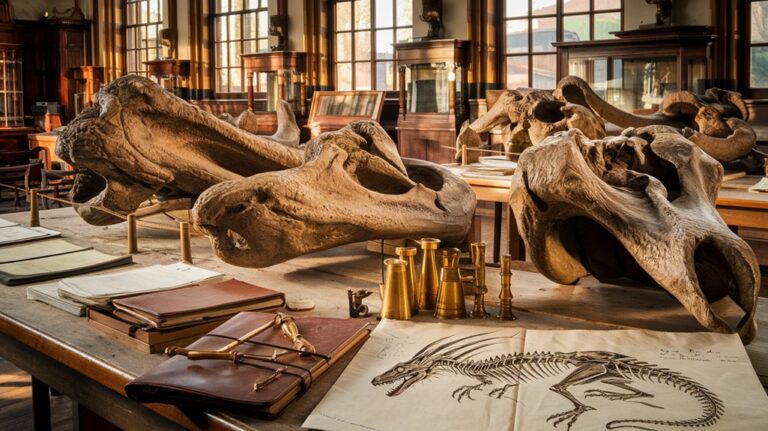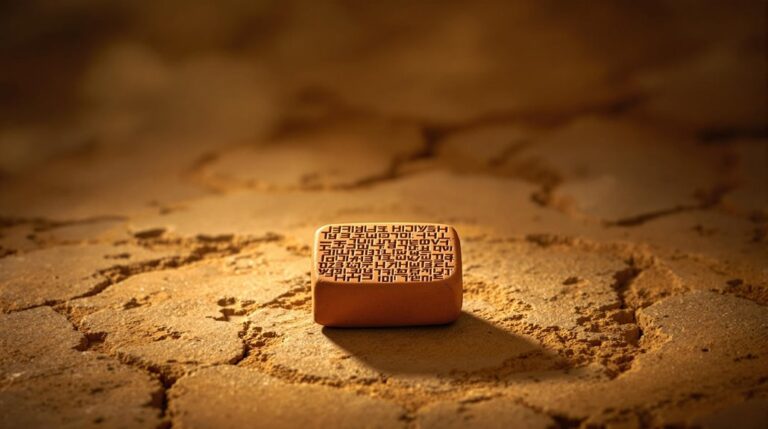Archimedes’ Screw: The 2,000-Year-Old Water Lifter
When you visit Egypt's Nile Valley today, you'll still find farmers using Archimedes' screws to irrigate their fields, just as their ancestors did two millennia ago. This deceptively simple machine has outlasted empires, survived technological revolutions, and continues to solve modern engineering challenges. While you might think a 2,000-year-old invention would be obsolete by now, this ancient water-lifting device has proven more relevant than ever in our quest for sustainable solutions.
The Ingenious Design Behind an Ancient Marvel

While ancient civilizations faced countless challenges in water management, the Archimedes' screw emerged as a brilliantly simple solution for lifting water to higher elevations. Manual labor or animals often provided the power to operate these devices.
The ancient Egyptians utilized this technology to lift water from the Nile River for irrigation purposes.
You'll find its core design consists of a helical screw housed within a hollow pipe, typically angled between 30 and 40 degrees.
The genius behind this invention lies in its straightforward operation. As you rotate the screw, water gets trapped within the helical pockets and defies gravity, moving upward without any need for complex valves.
Several design innovations have enhanced its versatility, from fixed screws with rotating casings to various thread configurations. Through efficiency enhancements over time, modern versions can achieve up to 80% efficiency.
What's remarkable is that you can scale this device from tiny quarter-inch models to massive 12-foot diameter systems.
Origins and Historical Development
Although historians debate the exact origins of the Archimedes' screw, archaeological evidence points to its use in ancient Egypt and Mesopotamia as early as the 7th century BC.
The device's historical significance grew when Greeks encountered it in Hellenistic Egypt, leading to Archimedes' mathematical study around 234 BC. Created in 265 BC, this efficient water transport system would become one of his most enduring innovations. The technological evolution of this ingenious invention spans over two millennia, from ancient water lifting to modern industrial applications. The device's efficiency in agriculture was demonstrated through its irrigation capabilities, making it essential for ancient farming practices.
- Romans advanced its design by introducing human-powered operation through treading
- Konrad Kyeser revolutionized the mechanism in 1405 by adding a crank system
- The invention inspired modern technologies, including the first seagoing steamship with a screw propeller in 1839
Despite being commonly associated with Archimedes, historical records show he never claimed to invent it, with credit being attributed to him two centuries later by Diodorus.
Ancient Uses Across Civilizations
Throughout ancient history, the Archimedes' screw played a pivotal role across four major civilizations, each adapting the technology to meet their unique needs.
In ancient Egypt, you'd find these devices along the Nile River, where they enabled irrigation by lifting water to higher agricultural lands. The screw's tilted angle design prevented water from flowing backward during operation.
The Greeks, led by Archimedes' mathematical insights, expanded its use to include ship dewatering and advanced water management.
The Romans took the technology further, using multiple screws in series for mining operations and land drainage. You'll find evidence of their engineering prowess in well-preserved water screws discovered in Spain.
Even earlier, in Mesopotamia and Assyria, there's compelling evidence of ancient irrigation systems using similar devices, particularly during King Sennacherib's reign. Today in El Paso, the same technology moves 22 million gallons daily at water reclamation plants.
The technology may have even helped water the legendary Hanging Gardens of Babylon.
Materials and Construction Through Time
The evolution of materials used in Archimedes' screws mirrors the technological advancement of human civilization. Ancient materials like wood and bronze formed the foundation, with pitch resin sealing wooden components to prevent leaks. The design principles first emerged in ancient Egyptian vessels around 654 B.C.E. The earliest versions were crafted from simple wood, as commissioned by King Hero II to solve water removal challenges.
You'll find that construction techniques evolved from simple hollow tubes to more sophisticated designs during the Medieval period.
As you trace the device's history, you'll notice three major material changes:
- Wood to metal, starting with Konrad Kyeser's 1405 crank innovation
- Cast iron to steel during the Industrial Revolution
- Modern shift to lightweight materials like aluminum and composites
Today's Archimedes' screws incorporate cutting-edge materials such as carbon fiber and 3D-printed components.
These advancements, combined with techniques like Light Resin Transfer Molding, have made the ancient device more efficient and durable than ever before.
Modern Applications and Adaptations

While ancient in origin, Archimedes' screw has found remarkable success in modern industrial, agricultural, and environmental applications.
You'll find this screw technology at work in wastewater treatment plants, where it efficiently handles varying flow rates and debris. The reliability and durability make these screws a preferred choice in modern infrastructure. The screws offer gentle handling of sensitive materials during transport. It's also revolutionizing small-scale hydroelectric power generation, with innovative adaptations like the fish-friendly turbines used in England's Settle and Torrs Hydro schemes.
The versatility of the screw extends to agricultural and industrial settings, from irrigation systems to grain elevators and chocolate fountains.
It's even played a significant role in engineering feats, such as stabilizing the Leaning Tower of Pisa.
In waste management, specialized screws with decreasing pitch help compact materials, while in aquaculture, they safely transport fish in hatcheries.
Engineering Legacy and Environmental Benefits
Looking beyond its practical applications, Archimedes' screw stands as a demonstration to enduring engineering brilliance that continues to shape modern technology. The device's helical design enabled unprecedented water transportation efficiency in ancient times.
You'll find its influence in numerous engineering innovations, from steamship propellers to modern conveyor systems. Today, it's especially valued for providing sustainable solutions in water management and renewable energy generation. Recent studies have shown that the slow rotation speeds of Archimedes screw turbines make them particularly safe for fish passage.
The screw's environmental benefits are particularly significant:











